Mortimer Wilson Warner
2 April 1842 – 14 August 1921
Ever since the
the countries of Europe became aware of the North American continent,
their eyes turned to the west and the setting sun. They came to the
“new world” for various reasons. Some sought religious freedom,
or a better way of life, while others sought adventure. But there was
one thing they had in common, the hardships of taming a new land.
Even before they were freed from the shackles of the oppression of
their mother county, many still looked to the sunset with wonder in
their eyes as to what lay beyond. The frontiersmen and their families
followed the setting sun to find out. They pushed over the mountains
and established homes, and communities on the frontier.
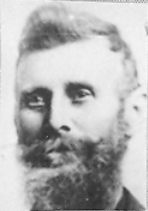
With the birth of the United States as a nation, her borders extended to the Mississippi River. The purchase of the Louisiana Territory from France in 1803 extended the borders of the new nation to the Rocky Mountains. Beyond was Oregon and Mexico which stretched on to the Pacific Ocean, People continued follow the setting sun, pushing ever westward. As before, their motives were the same, some sought religious freedom, or a better way of life, while others sought adventure.
This is the story of a boy who was born in central New York State, where his family had settled at the end of the eighteenth century. But before this boy was ten years old, he had transversed the continent and grew up to tame the Great Basin in the Rocky Mountains.
Mortimer Wilson Warner was born on April 2, 1842 in Clay, Onondago County, New York to Orange Warner and Delilah Robison Warner. He was their fourth child. All three older children were also sons: Holstien Monroe (6 Mar 1837), Dorus Burzee (26 Jul 1838), and Orlando Wallace (23 Oct 1839). There was also an older half brother, Byron (1 Feb 1833).
Just one year before his birth, Mortimer's parents had joined the Mormon Church on January 20, 1841. Within a short time the family left New York and moved to the new bustling city in Illinois called "Nauvoo". Here his sister, Cornelia Elizabeth (18 Sep 1844) was born.
Mortimer was just over two years old when Joseph Smith was murdered on June 27, 1844. As a small child, he saw persecution increase until on February 4, 1846 at almost four years of age, the Mormons began to leave Nauvoo under extremely critical conditions.
As the Mormons moved across Iowa in 1846, way stations were established along the way where some of the pioneers remained for a time and farmed the land providing food for others who followed. It was at Montrose, Iowa that Orange stayed with his family. While there, Mortimer's mother became ill and passed away on April 5, 1847. just a few days after the birth of Orange Horatio (29 Mar 1847).
Not only was this a tragedy for the children who ranged in age from eleven on down, but for Orange who had now lost his second wife. He was left alone with seven children. They moved a little further across Iowa and settled temporarily in Jefferson. Within two years, he married Mary Elvira Tyler, a widow with two small children of her own. While living in Iowa, their first child, Cyrus Adelbert (16 Oct 1849) was born.
The family remained in Iowa until the spring of 1851 when they began the long difficult one thousand mile trek across the plains with the Eaton Kelsey Company. Mortimer was nine years old and undoubtedly he found the three month trek to be very difficult and yet adventuresome at the same time. He and his brothers walked most of the way, barefooted, Along the way, they drove five head of horses, three mules, four milk cows and three head of sheep, and some oxen.
The family
arrived in the Salt Lake Valley on September 23, 1851. At first the
Warners lived at Sessions Fort (now Bountiful) for a short time. Here
Mortimer was baptized on December 7, 1851. Early the next year, they
were sent with the Anson Call Company to help settle Fillmore, Utah
which had been designated to be the territorial capitol. 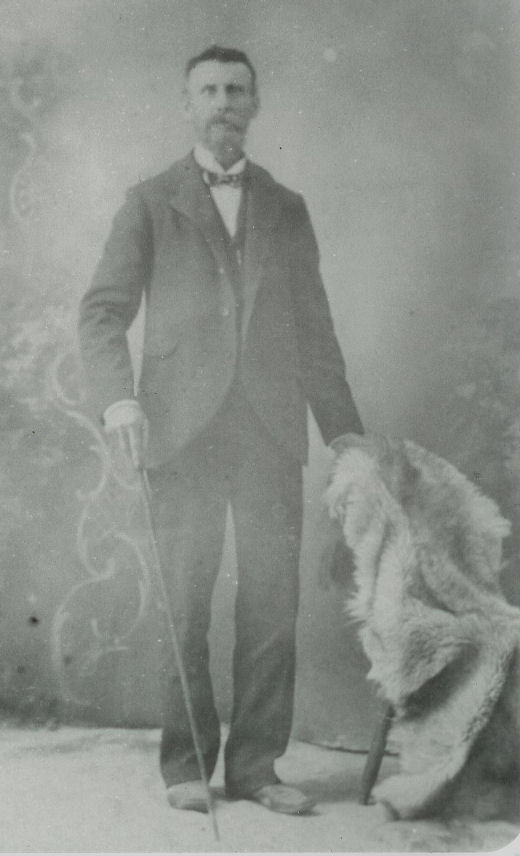
Mortimer Wilson Warner
The Warner family was one of the first to have their house nearly finished, and they were able to move in before winter arrived. As a boy, Mortimer helped lay the logs for their home. He watched the men hew the logs, square them off so they would fit together tightly. While laying the logs, one of the men said to him, “Come on Mortimer and help so you can say you helped lay the logs for the first house in Fillmore.” Some families had to live in their wagons. That winter was quite mild and Mortimer and his dad and brothers were able to build a sawmill, also the first in Fillmore.
Mortimer and the rest of the boys in the neighborhood would go to the mill pond to go ice skating, which they did barefoot. They would run and slide across the pond then lay on their backs with their feet toward the sun to warm them.
From time to time, Mortimer had to run over to the neighbors to barrow a hot coal from their fire. Every home had a fireplace that served to heat the house and for cooking. Matches were very scarce so they had to bank their fires to keep the coals hot in order to restart the fire. If it went out, they would have to borrow a hot coal from someone else to restart the fire. They would fill the child's hand full of ashes and lay a coal on top. Then they would run for home as fast as they could before the coal went out.
Over the next several years, the family continued to grow as six more children were born to Orange and Mary in Fillmore. Mary Emily (13 Jul 1852), Rhonda Frances (11 Mar 1854), Jedediah Morgan Gran ( 27 Jul 1857), Orson J (1858), Levi M (1862), and Eliza Ann (7 Oct 1864). By this time, Mortimer was a grown man.
There were so many converts corning to America and to Utah that Brigham Young introduced the Perpetual Emigration Fund. Teams and wagons were sent back to Mormon Grove near Florence, Nebraska to meet the immigrants and bring them across the plains to Utah. This saved the expense of the new arrivals of having to buy teams and wagons to cross the plains. Since Mortimer – now twenty two – was a very experienced teamster, he was one who went back to help out as part of one of the companies.
The trip back to the Valley was not without trials. Among the many hardships, one day lightning struck and killed five oxen. On another occasion while crossing the Platte River, a man had his arm chewed badly by a bear. But there were also the good times. They often stopped to let the oxen rest, shoe them, mend the yokes, and make general repairs. The women took this time to bake bread and do laundry. They sometimes rested a few days when they found a stream of water with good grass for the animals.
One afternoon one of the older women went down below camp to investigate some red berries and find out what they were. She came running back to the camp and said there was a big black beast down in the bushes. Every man grabbed his gun and made a wild dash for the berry patch.
Though Mortimer
was mending his boots, he was not going to miss this excitement and
with only one boot on, he ran to join the hunt. The big black beast
was found to be a huge black bear and they all wanted to get him. The
grass was tall in the berry patch and the bear had trails all through
the grass. Upon finding him, they all started to shoot at it. This
made the bear angry and harder to kill. They really had a time. He
would come out on one trail and dart into another when one man
shouted, "Here it is!" Then they all ran for that side and
the old bruin would make a pass for the nearest opening in sight.
When one of the men passed by the opening where Mr. Bear was, it made
a pass at him and hooked him by the seat of the pants, taking the
whole seat out of them. They finally killed the bear, dressed him,
and hung him to a telegraph pole. Then all the fiddles and
concertinas (a small accordion) were brought out. They built a big
bonfire and danced until midnight. They danced Scottish Reels,
Quadrilles, and Shottishes and called it the Bear Dance. They divided
the meat among all.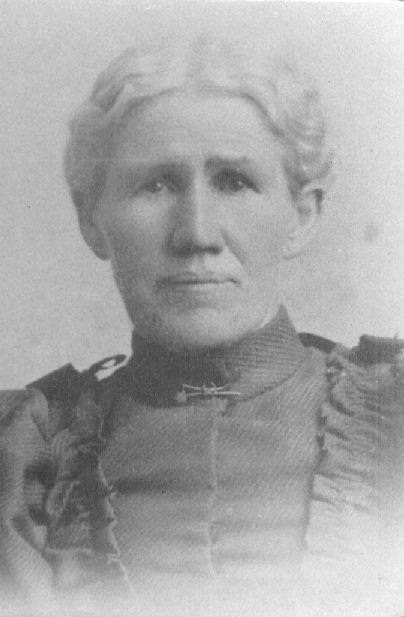
Christina Brown Warner
On the trail is where Mortimer met a lovely little nineteen year old girl, Christina Brown, with whom he fell in love. Christina and her family had just come from Scotland and were part of the same company. Christina and the other young ladies often would walk ahead of the wagons and sing. Mortimer was pleased with her singing and asked her if she would ride with him for a while and sing to him. She did and they soon fell in love and saw each other often as the days passed into weeks. They finally reached the Salt Lake Valley on October 20, 1862.
After the trip, Mortimer went home to Fillmore. The Brown family was sent to bolster the settlement of Beaver, about 60 miles south of Fillmore. A short time later Mortimer and Christina were married on February 29, 1864 at Fillmore, Utah. Mortimer had nearly always slept with his cousin till he got married. That night after they were married, he went to the McCulough home out of habit. He was just about to open the door when he remembered be was a married man and had a wife. So he turned around and ran home as quickly as possible. Then he had a good laugh.
They made their
home in Fillmore where he farmed and ran a blacksmith shop. Not only
was Mortimer a religious man but also a good friend of the Indians
and learned their language. The story is told of him being with a
tribe of Indians and he saw all the women leaving camp early in the
morning, each carrying a basket. They went to a ledge above the camp
and with sticks, caught snakes that were still in hibernation. They
filled their baskets and returned to camp. The men had dug a good
sized pit lined with stones and had a fire going in the pit. The
snakes were now waking up and sticking their heads out of the baskets
as they were tossed into the pit. The men poked the snakes with long
slicks testing for doneness. As the snakes cooked, they cut off their
heads, skinned them and then sliced them. What a feast they had and
Mortimer sat there cross-legged along with his Indian friends eating
snake with them. 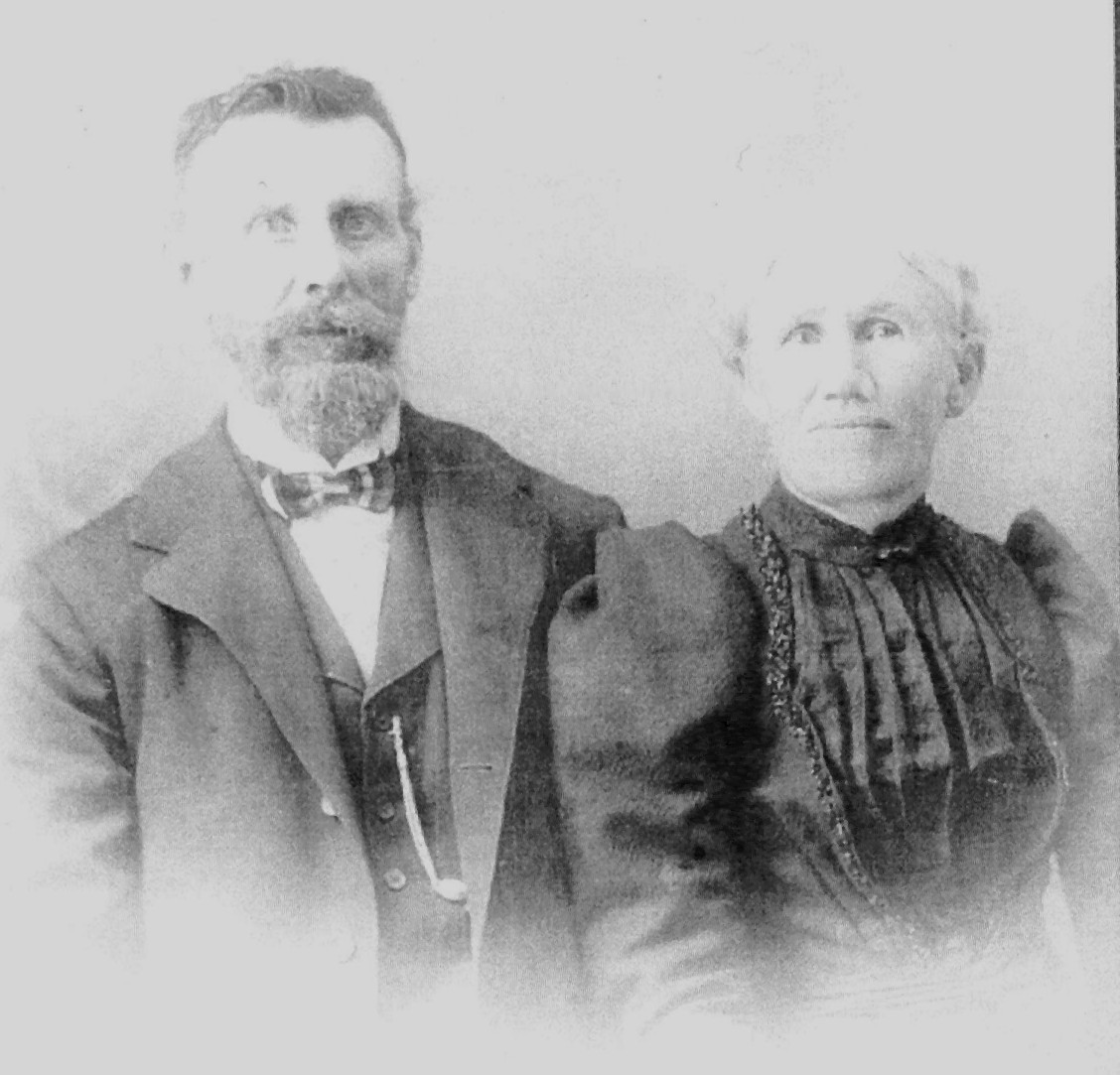
Mortimer and Christina
Not all the tribes were friendly. When Fillmore was first settled, the Indians would steal cattle or anything they could get a hold of. Mortimer, along with others, was sometimes called out in the night to grab their guns and chase them away. When the men were called out to fight, the women would go to each other's homes for protection.
By the time Mortimer and Chistina's first child, Christina Delilah (19 Dec 1865) was born, the Utah Territory was involved in the Black Hawk War in which he participated. The war lasted three years. The second daughter. Elizabeth Ellen (8 Nov 1866) was born at this time.
In 1868 Mortimer moved his family to Kanosh, Utah (about fifteen miles south of Fillmore) where he continued to farm. He knew Chief Kanosh who lived in the area. It was January 29, 1869 that their third child and first son was born. They named him Mortimer Wallace.
On October 5, 1869 Mortimer and his wife journeyed to Salt Lake City and together received their endowments and were scaled in the Endowment House.
Another son was
born to the family at Kanosh on March 6, 1871. His name was Robert
Orange. Following his birth two more daughters were born: Lonevie on
June 17, 1873 and Janette on October 17, 1875.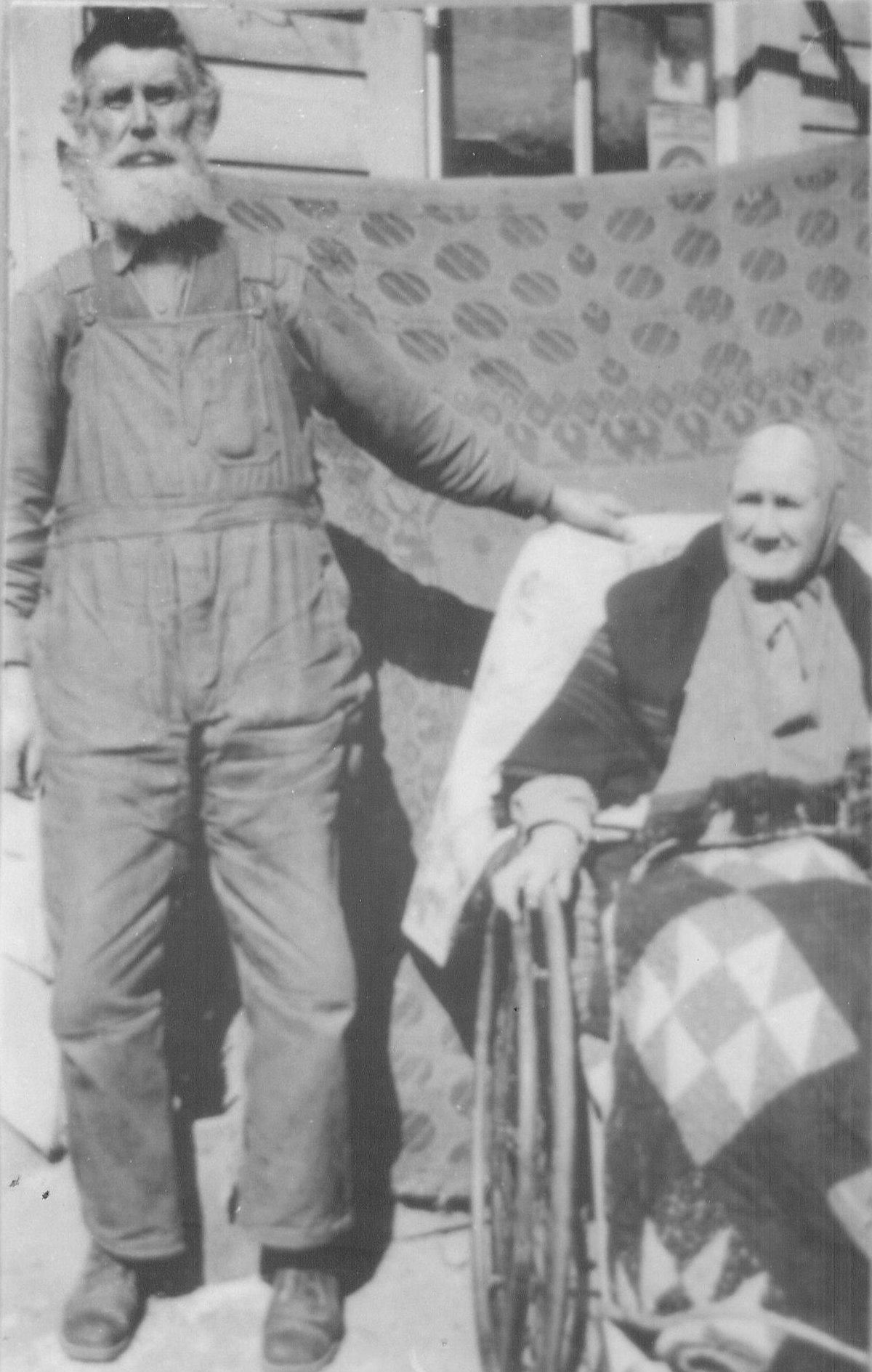
Mortimer and Christina in later years
In 1877 Thomas Rice King received a call from Brigham Young to establish a United Order in the Circle Valley. Since he and Mortimer had just bought a threshing machine, the move to the Circle Valley waited until November, after the threshing was done. Several families, Including Mortimer and Christina, were invited to join the order and moved to Circle Valley and established a settlement named Kingston. Since Mortimer and the Kings were good friends, Mortimer took his family and joined them in Kingston, arriving in 1878 after their seventh child, Cornelius, was born on March 14, 1878 at Fillmore.
Life in the United Order was happy. They had their own individual homes, but worked as one big happy family. coming together for meals. At mealtime, the entire community came together, the adults ate in one section of the dining hall and the children in another. Work was assigned to each person according to their abilities and skills in farming, dairying, and anything else it took to make the community run. The women took two week shifts that rotated between cooking and tending the children.
While living there in Kingston three more children were born. Twins Mary and Marion where born March 1, 1880. Marion died a week later. On June 1, 1882 a son, Dorus, was born.
In 1883, upon recommendation of the authorities of the Church, the United Order was brought to an end. The property was divided up and people began moving away. It was probably in 1882 or 1883 that Mortimer moved his family to Coyote and settled in the mouth of Black Canyon. There Mortimer and his family spent most of the rest of their lives and raised their large family. They had two more children while living in Coyote: Adelia was born March 26, 1884 and died two years later on March 13. 1886, and Lavina, who was born on March 22, 1887.
When Mortimer and Christina first moved their family to Coyote they lived across the river from the main farm. During the spring runoff, the river ran high for a month or sometimes more. They couldn't get to town unless they swam the horses across, pulling the wagon. One time Mortimer had to go to town for supplies and groceries. At that time the river was particularly high and Christina was frantic as she saw him coming home. The whole family ran down to the river bank to see how he was going to get across. He had to go farther upstream and swim the horses downstream so they could come out at the landing. He started the horses into the stream and the water came into the wagon box so he had to put the supplies up onto the spring seat. About half way to the landing, the wagon box floated off the carriage frame so Mortimer let loose of the lines. The horses went on across the river. Mortimer went on down the river in the wagon box. Christina screamed, “Heavens Mort, where are you going?” He stood up in the box and waived his hat and said, “Going down the river!” The boys ran to the corral and got a long lasso rope and threw one end out to him as he drifted by. He caught hold of the rope and fastened it to the brake leaver and they pulled him to the bank. Christina said, “I’m not going to live on this side of the river any more.” So as soon as the flood season was over, they moved the house across the river.
Mortimer was a very
religious man and was active in the church, serving in the
ward when it was first organized as the Marion Ward on
September 23. 1883. He was a Sunday School teacher for
many years.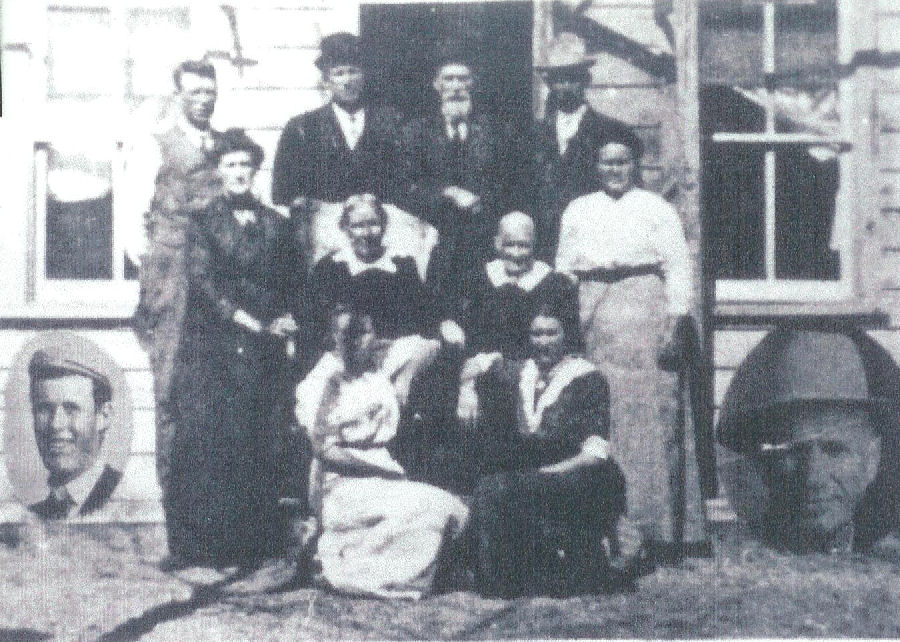
The Warner Family. Back: Orange, Mr. McArther, Mortimer, and
Cornelius, Middle: Elizabeth, Mrs. McArther (Christina's
sister), Christina, and Lonevie. Front Dorus (insert), Janette,
LaVina, and Wallace (insert)
He was a good farmer and a good manager. It seemed like everything he put his hands to made money. This concerned to him so he sought the Lord in prayer. He prayed that if this accumulation of wealth be taken away from him if it should cause him to turn away from the church. It wasn't long before he began to fail financially until he was once again of humble means.
In about 1910, he sold his place to Neil Warner and he and Christina moved to Junction, Utah where they lived a number of years. In later years, about 1918, they moved back to Coyote and spent the remaining years of their lives there. They lived with their daughter, Janette and her husband, Daniel Day, who had a home on Poison Creek. It was here that Mortimer died on August 14, 1921 at the age of 79, leaving a great posterity to be proud of. He lived a good life and went through many hard times. He is buried in the Coyote Cemetery.
* * * * * * *
The main source of this story is an uncredited life story of Mortimer Wilson Warner and stories by his daughter, LaVina Warner Alger from various sources.